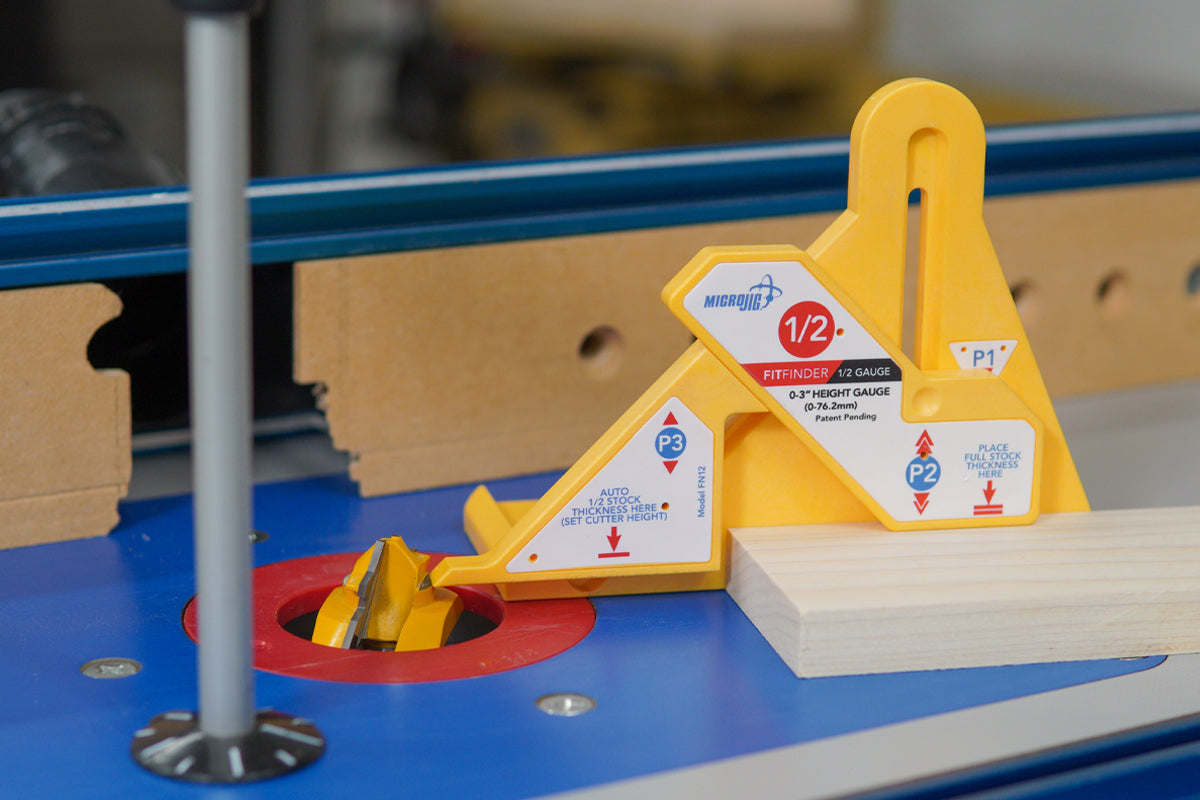Jonathan Salisbury takes a look at MicroJig’s lock mitre cutter, created for table routing and designed to make the process error-free.
The Woodworker & Good Woodworking
If you want to avoid seeing end-grain in your box, rail or frame constructions, the mitre joint is a good one to use. In larger constructions, reinforcement is often required if you want a long-lasting result that’s easy to line up for clamping. Using biscuits or dowels helps, but that means adding another step.
The lock mitre is an alternative way of creating stronger joints as the profile increases the surface area glued, aligns the two sides and helps re-route forces that’d otherwise damage it. There’s a range of cutters that can help you cut well-fitting lock mitre joints quickly, easily and consistently.
Only one cutter is required to make both sides of the joint; the first end is pushed through horizontally, the second vertically. This requires careful setup, with the cutter positioned so that its centre is directly in line with that of the material. Some cutters involve a certain amount of trial and error, but the MicroJig Lock Mitre Bit has an in-built centre-finding platform, which provides a reference point to help users get it right first time. Having marked a reference line on the wood, simply increase or decrease the cutter height so that the centre-finding platform is in line, and lock the router in this position. The ends can then be cut by passing them through the cutter horizontally, using a cross-slide, or vertically using a suitable jig or push block. Since the wood must be supported at all times, to ensure there’s a constant flat surface for the workpiece to press against, the fence needs to fit closely around the cutter. Sacrificial boards could also be created and the cutter fed into them. Setting the fence position is also easy with the cutter’s extended top, requiring only the piece of material to be used and a steel rule. I suggest looking this up online for a full explanation.
Testing it out
I appreciate it when companies go to the effort of helping owners learn how to use their new purchases. There’s nothing worse than a poorly written instruction booklet; the fact that MicroJig don’t provide any at all doesn’t matter, as their online video is so good that a paper version isn’t needed. To make setup even easier, MicroJig also offer the FitFinder 12 Gauge (£42.74), which automatically shows the height that the cutting platform needs to be set for the timber. Once cut, it seemed there was a little slack in the joint; research told me that this was due to the glue channels that are automatically formed by the cutter to enable excess adhesive to run along and out of the joint. These, I’m told, help to increase strength as well as make the joints easier to clamp, especially if they’re particularly long.
Specification
- Patent pending centre finding platform sets the correct bit height first time, every time
- Guaranteed perfect joint fit
- Exclusive glue wells allow for tighter, easier to clamp joints by providing room for excess glue
- Designed to work with MicroJig’s FN12 FitFinder and other height gauges
- Works with stock from 1/2" (13mm) to 3/4" (19mm) thick
The Verdict
- Pros: Centre-finding platform makes it simple to set up; glue wells help to make over-glued joint clamping less problematic; offers an easy way to create strong, tight-fitting mitre joints
- Cons: Cuts limited to 19mm (34in) maximum/thickness; high asking price
- Performance Rating: 5 out of 5
- Value Rating: 2 out of 5
Click here to download the full article
Shop Micro Jig FitFinder Lock Mitre Bit

